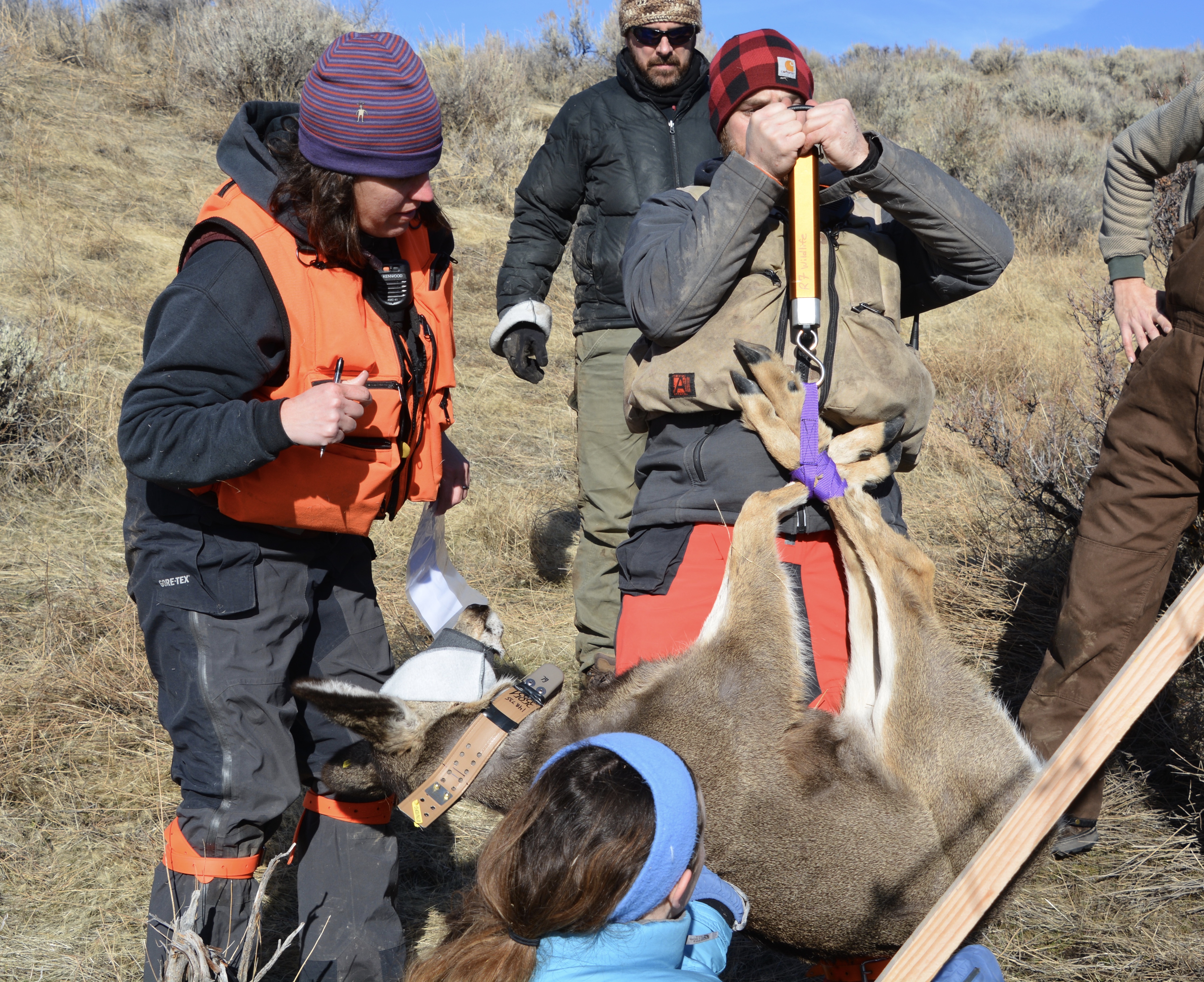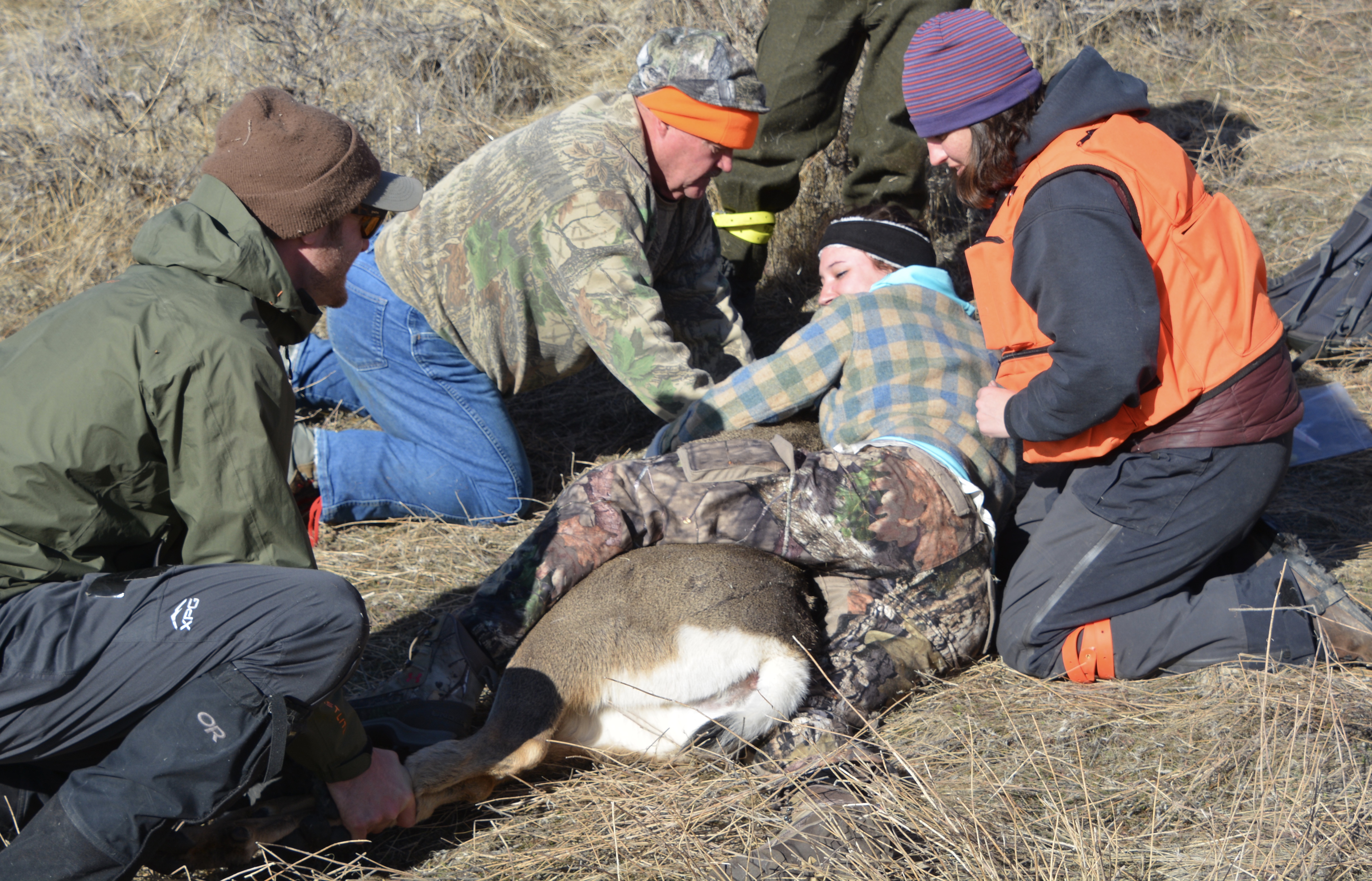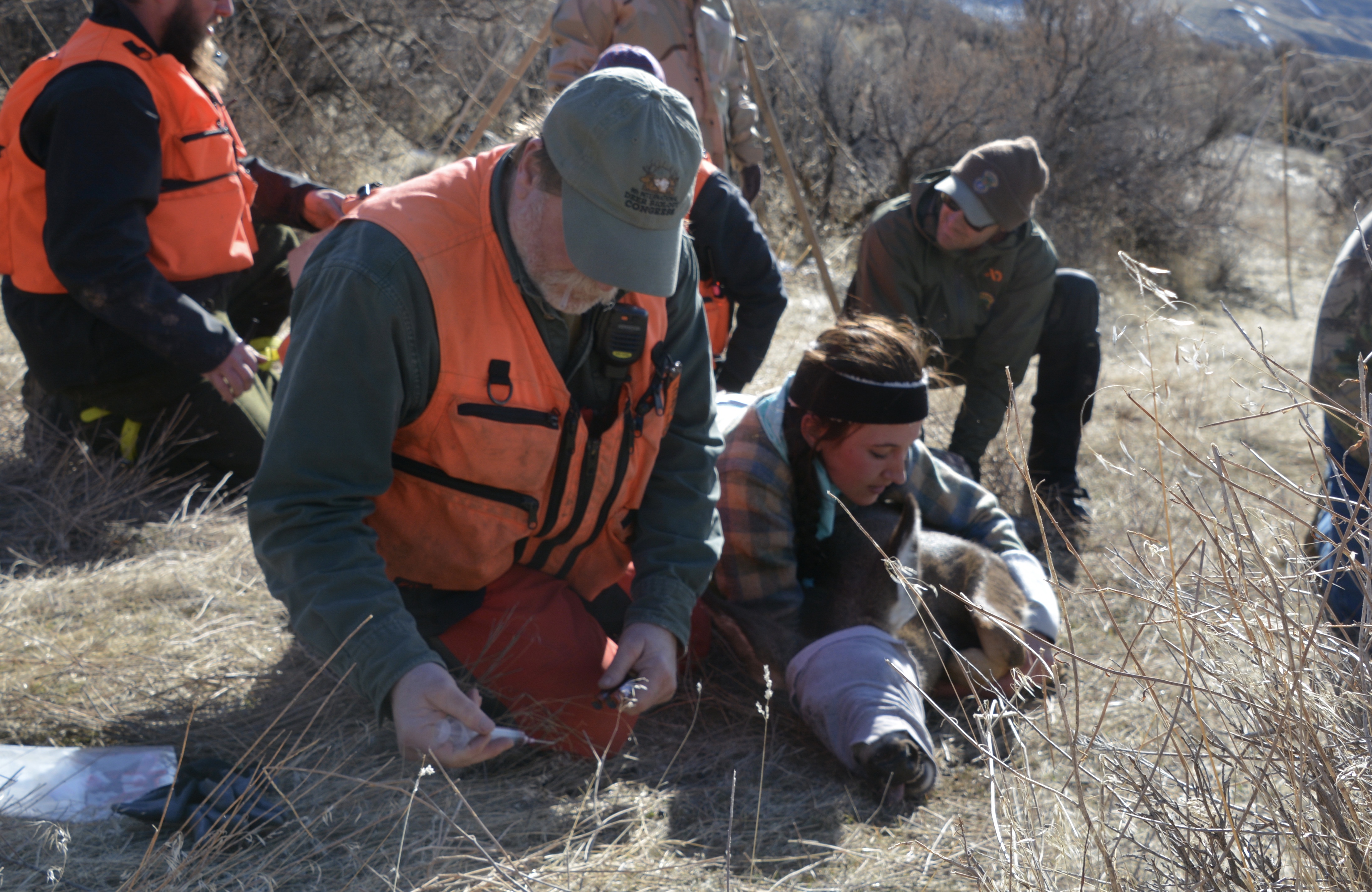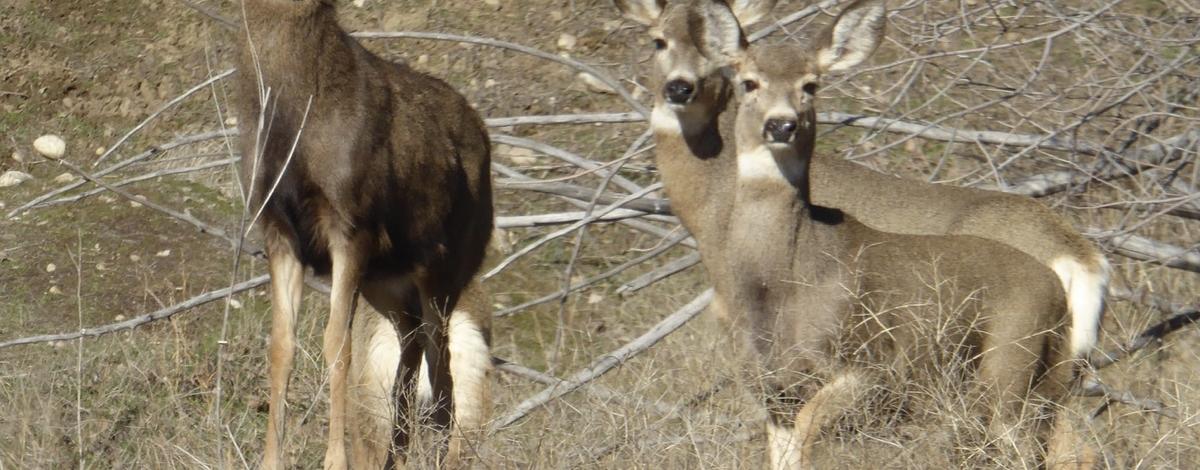From a mule deer fawn’s perspective, Idaho Fish and Game’s winter trapping must be something like an alien abduction. The fawn is chased by something hovering in the sky, captured, briefly restrained and blindfolded, then tested and measured before being released as if nothing ever happened.
From Fish and Game’s perspective, it’s just another season of wildlife trapping and monitoring.

From December through February each year, mule deer fawns are trapped using helicopters and drive nets or net guns, measured and weighed, ear-tagged and fitted with a GPS tracking collar.
While it may seem like an alien encounter to the deer, the interaction is a crucial one for Idaho Fish and Game biologists. The collars give biologists an idea of where the fawns travel and how many of them survive through the winter. When fawns die, the collars usually enable biologists to determine the cause of death. The vital information that biologists collect from each fawn also enables Fish and Game to project how likely each fawn is to make it through winter, and how that will affect the herd the following hunting season.
Fawn survival is key to maintaining mule deer populations. Whether fawns survive their first year typically determines whether a herd is growing or decreasing, so it is a critical component in the formula that biologists use every year to determine the health and population of mule deer herds across Idaho, which in turn helps them make management decisions.
“When you can have an annual abundance estimate, you can really see what is happening with trends in deer populations,” said Wildlife Research Manager Mark Hurley. “You know what is going on every year, and that’s pretty rare in wildlife management.”
The winter mortality study also allows biologists to react in real time to a harsh winter, like the one Idaho experienced in 2016-17.
“Because we have the fawn monitoring areas, we know the effect of a real difficult winter,” Hurley said. “There have been times that even before the winter is done, we are adjusting hunting permit levels for the next fall. As the Fish and Game commission is setting those seasons, we can recommend ‘let’s remove this antlerless harvest because we’re going to have a lot less deer next fall.’”

20 years of experience
When the program started in 1998, Fish and Game biologists began monitoring fawns in six wintering areas across the state.
“It was a response to a call for increased monitoring of deer populations,” Hurley said. “At that time, we got small fee increase that had to be used for enhanced deer and elk population monitoring.”
Biologists knew fawn survival was one of the most variable aspects of the mule deer population, and determined that was where they should focus their study.
They radio-collared about 25 fawns at each site by using helicopters to drive deer into nets on the ground, where staff and volunteers were standing by to carefully untangle the young animals, weigh them to gauge their development and then release the deer to return to the herd, where they would then be monitored throughout winter and early spring.
The program continued in the same manner in those six areas for eight years, and the collars provided more information on mule deer populations than had ever been gathered before – including over-winter fawn survival estimates and migratory movements
At the same time, biologists were monitoring annual population changes – or trend estimates – by surveying specific large winter ranges every year, as well as estimating the age and sex ratios of herds. Put together, that information was used to estimate changes in population size, but the method was imperfect.
“When we were talking about the number of animals on these trend areas, we got these really variable abundance estimates because they were migrating into, or off of, our trend area at different times,” Hurley said. “So it wasn’t really a change in abundance – it was just where they were in their migration.”
Experiment leads to evolution
In 2007, biologists came up with a new plan that gave them a better picture of true population sizes.
“We knew that (fawn survival) was really important, and we wanted to be able to use that to model populations,” Hurley said.
First, biologists needed a better starting point for their population model. Rather than doing annual trend estimates on specific winter ranges on a yearly basis, biologists decided instead to do comprehensive surveys of every inch of the land in a “population management unit” that might have deer.
Biologists use a model based on statistical sampling, which allows them to estimate the total population without having to count every animal.
When they survey a grid of land for animals in a helicopter, they also correct for the animals they don’t see – known as “visibility bias.”
Fine tuning their methods
If the surveying biologists spot animals, they record the group size, whether the animals are moving, standing or bedded down; type of vegetation, percent of screening cover and percent of snow cover. They also record information about each flight, such as aircraft type, speed and altitude, flight pattern, and the time of year.
All of that information is entered into a statistical model that estimates the animals that are missed (usually between 5 percent and 20 percent) during the survey. A standardized sampling system made the process more efficient, as not every part of every unit needs to be surveyed to get a good population estimate.
After arriving at a better starting point for their population modeling, biologists also needed more data on adult survival in mule deer herds. Researchers began trapping, collaring, and monitoring does, and coupled that information with the fawn survival estimates to model the change in populations based on survival rates.
At the same time, Hurley built computer models of populations so biologists could estimate true population size through those survival estimates.
“Now we have the whole package: we’ve got how many are actually produced on the landscape, how many survive until six months old,” Hurley said. “We radio collar them and monitor fawns to a year old – so now we know how many are actually recruited. All that stuff goes into the population model, and the last step, of course, is harvest.”
With the updated modeling, biologists only need to conduct comprehensive surveys every five years and can project the change in populations annually.

Expanding the scope of the surveys
As the modeling expanded, so too has the scope. What started with collaring 25 fawns in six wintering areas per year has expanded to up to 42 trapping sites and hundreds of fawns and does.
Hurley said the winter mortality survey has evolved to be more representative of each of the mule deer populations in the state, which are segmented into groups that have interbreeding populations based on some of the early collaring data. The number of monitoring areas and collared animals changes in proportion to the population of each group.
“It’s the same population of deer. While they might be in different winter ranges, they all share the same summer range,” Hurley said. “It gives us a really good representation across the population management unit of what the true survival of both does and fawns are.”
Using helicopters to herd deer into nets is still the preferred method in areas with high deer densities, but biologists also collar deer in other areas by biologists in helicopters shooting nets from the air to capture single animals.
Biologists have also figured out ways to model survival using only weather conditions, resulting in some trap sites being discontinued and modeling substituting for trapping and collaring. But those areas are also checked every few years to make sure the models are still accurate.
With Fish and Game staff currently working on a new mule deer management plan, the migration patterns gleaned from the collars will help biologists to redraw boundaries for Idaho’s mule deer herds.
“We need to make sure where we are counting them, and where we are monitoring survival matches up perfectly with where animals are harvested to provide accurate population estimates through modeling,” Hurley said.
Here's more information about deer and elk monitoring

